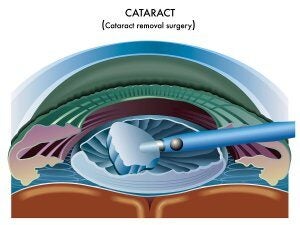-
What to Expect from LASIK
 Laser-assisted in situ keratomileusis (LASIK) is a popular and effective method of vision correction. If you decide to have LASIK near Chicago , you can look forward to freedom from contact lenses and eyeglasses. The procedure involves reshaping the cornea to correct refractive errors. Before deciding to have this procedure, schedule a LASIK consultation with your ophthalmologist to ensure the procedure is right for you.
Laser-assisted in situ keratomileusis (LASIK) is a popular and effective method of vision correction. If you decide to have LASIK near Chicago , you can look forward to freedom from contact lenses and eyeglasses. The procedure involves reshaping the cornea to correct refractive errors. Before deciding to have this procedure, schedule a LASIK consultation with your ophthalmologist to ensure the procedure is right for you.Preparation
Before having LASIK, you’ll undergo an eye exam at an optical center. Your eye doctor will evaluate whether you’re a good candidate for corrective surgery. If you wear a type of contact lens that may change the shape of your corneas, it’s important to stop wearing them for a few weeks before your eye exam and to only wear eyeglasses. Failure to do so may result in improper vision correction. Along with having an eye exam, you’ll talk to your ophthalmologist about your medical history, including any past and current eye conditions. You’ll need to disclose your allergies and any medications or supplements you’re taking. The day before you’re scheduled to have LASIK, avoid using any creams, lotions, or other products on your face because these can increase your risk of infection. Additionally, arrange to have someone else drive you to and from your appointment.
Procedure
The LASIK surgery itself takes very little time. First, the ophthalmologist will apply eye drops to numb your eye. The area around your eye will be thoroughly cleansed. Then, if your eye doctor has invested in the most advanced technology for vision correction, a corneal flap will be created with a laser. Otherwise, a mechanical blade called a microkeratome will be used. Then, a laser is used to reshape the cornea. Once this is completed, the corneal flap will be repositioned.
Recovery
Immediately after the LASIK procedure, your eye doctor will place an eye shield over your eye. It’s critical to wear the eye shield for as long as your doctor recommends, since rubbing your eye or otherwise exposing it to pressure can dislodge the corneal flap. You can expect to remain home resting for a few days after the procedure. You’ll return to the optical center for a follow-up appointment within the first one to two days, and for additional follow-up appointments during the subsequent six months.
-
A Look at Intraocular Lens Treatment Options
Patients undergoing cataract surgery have more options available to them than ever before. During cataract surgery, the natural lens of the eye is removed. Then, the eye doctor places a permanent lens implant. This is known as an intraocular lens (IOL). You can talk to an eye doctor in Chicago and watch this video to learn about the different types of IOL implants that are available .
For example, one option for cataract treatment is to have a monofocal IOL. This lens enables patients to have corrected vision at far, intermediate, or near distances. A newer type of IOL implant is the multifocal lens, which can accommodate both near and far corrected vision. There are also IOL options that are designed specifically for individuals with astigmatism.
-
The Cataract Surgery Procedure
 Cataracts are cloudy areas on the lens of your eye that interfere with your ability to see clearly. If you’re anticipating having cataract surgery near Chicago, you can talk to your eye doctor about what you can expect from the procedure. Your cataract surgeon will determine if you’re a good candidate for the surgery, inform you of the potential risks, and explain the many benefits of cataract surgery.
Cataracts are cloudy areas on the lens of your eye that interfere with your ability to see clearly. If you’re anticipating having cataract surgery near Chicago, you can talk to your eye doctor about what you can expect from the procedure. Your cataract surgeon will determine if you’re a good candidate for the surgery, inform you of the potential risks, and explain the many benefits of cataract surgery.Preparation
Before having any type of surgery, you can expect to undergo some tests and discuss your medical history. For cataract surgery, your eye doctor will perform an A-scan to measure the length of your eye. Then, keratometry is used to measure the curve of the cornea. These measurements will inform your eye doctor’s recommendations for the type of intraocular lens (IOL) implant that best suits your needs. The lens implant can provide full vision correction . In addition to discussing the different types of IOL implants available to you, you’ll be asked about your medical history. Your eye doctor will need to know if you’ve previously had eye surgery, such as LASIK surgery. Additionally, you’ll need to disclose all of your medications, since certain drugs can interfere with pupil dilation.
Procedure
There are a few techniques that may be used for cataract surgery; however, phacoemulsification is most often used. First, your eye doctor will apply a local anesthetic to eliminate discomfort. Then, a very small incision is made in the cornea. The ophthalmologist inserts a tiny instrument that emits high-frequency ultrasound to essentially liquefy the lens so that it can be suctioned out. The next step in cataract surgery is to place an IOL implant. Finally, the incision is closed.
Recovery
It’s important to follow your eye doctor’s post-operative directions. After your surgical procedure you will rest for a little while in a recovery area. You will need someone to drive you home after your surgery. You may be up and about as you wish, but avoid strenuous activities. Also you will experience sensitivity to light that may require you to wear sunglasses on the day of your procedure. You’ll also need to apply eye drops as directed by your eye doctor.
-
How LASIK Can Change Your Life
 Refractive errors make it difficult or impossible to complete daily tasks without the help of eyeglasses or contact lenses. LASIK eye surgery can fix these issues and allow you to see clearly without the help of corrective lenses. Keep reading to find out how it can change your life:
Refractive errors make it difficult or impossible to complete daily tasks without the help of eyeglasses or contact lenses. LASIK eye surgery can fix these issues and allow you to see clearly without the help of corrective lenses. Keep reading to find out how it can change your life:LASIK can be used to treat nearsightedness, farsightedness, and astigmatism. The procedure is safe and simple and only takes a few minutes to complete. You need someone to accompany you to your appointment so they can drive you home safely, but you should notice extreme vision improvements as soon as the surgery is complete.
With the help of your eye doctor in Chicago, you do not have to suffer with bad vision anymore. After LASIK eye surgery, you do not have to waste time putting on your glasses or chancing your contact lenses in order to see. You can start living your life without vision restraints holding you back.
